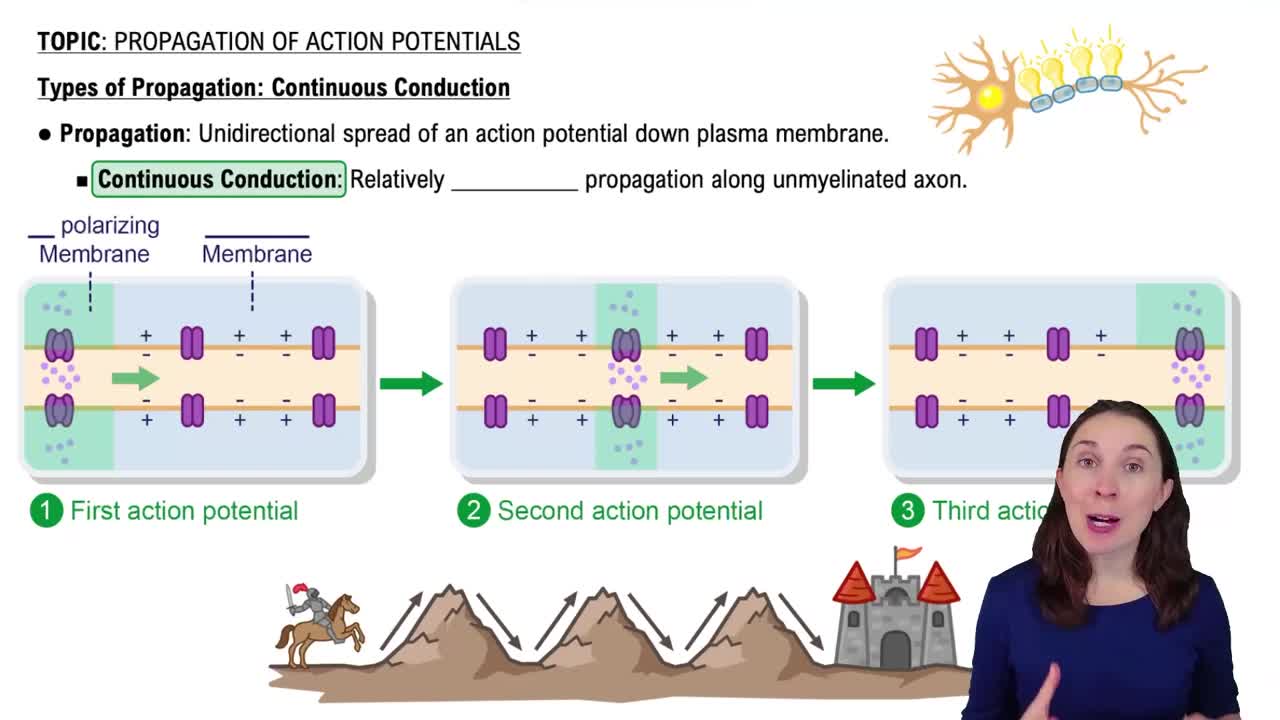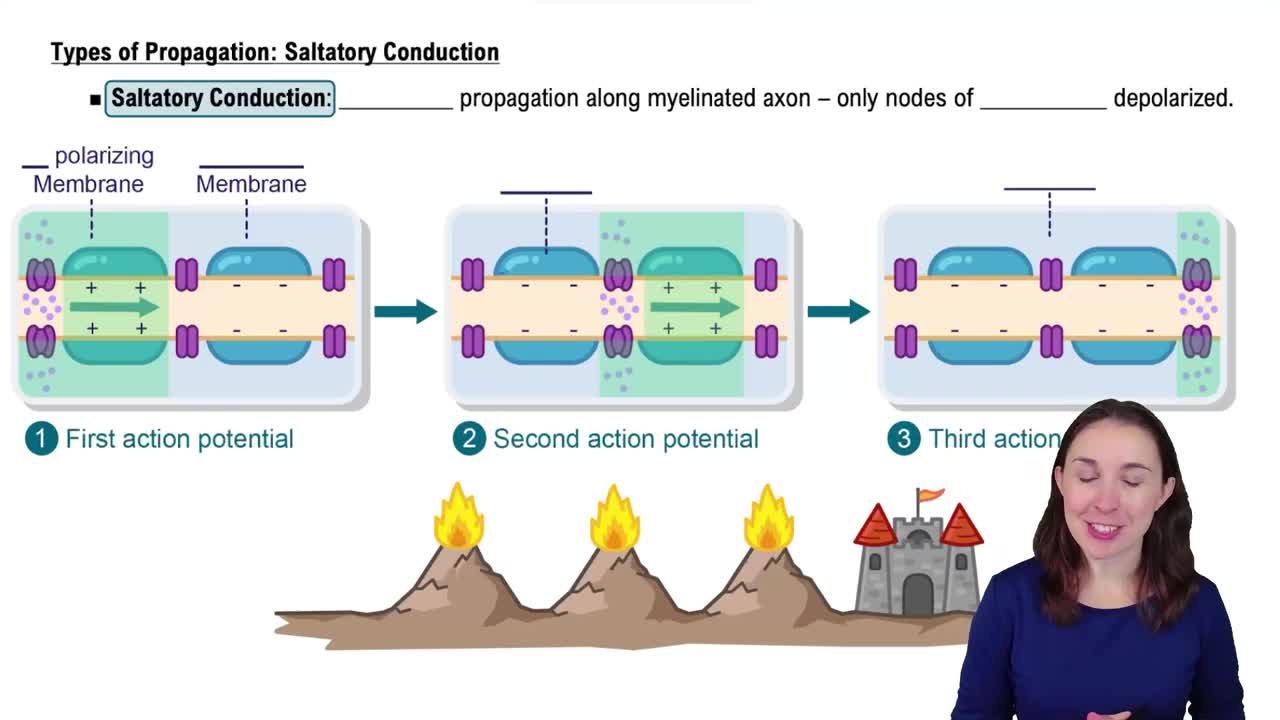What would happen if the drug blocked K+ channels instead?
 Erin C. Amerman 2nd Edition
Erin C. Amerman 2nd Edition Ch. 11 Introduction to the Nervous System and Nervous Tissue
Ch. 11 Introduction to the Nervous System and Nervous Tissue Problem 11.4a
Problem 11.4aExplain how an action potential is propagated down an axon in continuous conduction. Why is saltatory conduction faster than continuous conduction?
 Verified step by step guidance
Verified step by step guidance
Verified Solution
Key Concepts
Action Potential

Continuous Conduction

Saltatory Conduction

During a surgical procedure, an anesthesiologist administers to the patient an inhaled anesthetic agent that opens Cl− channels in the postsynaptic membranes of neurons in the brain. Explain why this would put the patient 'to sleep' for the duration of the surgical procedure.
Albert accidentally ingests the poison tetrodotoxin from the pufferfish, which you know blocks voltage-gated Na+ channels. Predict the symptoms Albert will experience from this poisoning.
Albert, the patient in question 3, takes the drug lithium, which reduces the permeability of the neuronal axolemma to Na+ (that is, it allows fewer Na+ to enter the axon). Predict the effect this would normally have on his neuronal action potentials. Do you think this drug would be beneficial or harmful, considering his condition?
Predict the effect that tetrodotoxin would have on Albert's muscle fiber action potentials (see question 3). Would it affect end-plate potentials at the motor end plate? Why or why not? (Connects to Chapter 10)
Explain what would happen if depolarization of the trigger zone led to a negative feedback loop instead of a positive one. (Connects to Chapter 1)